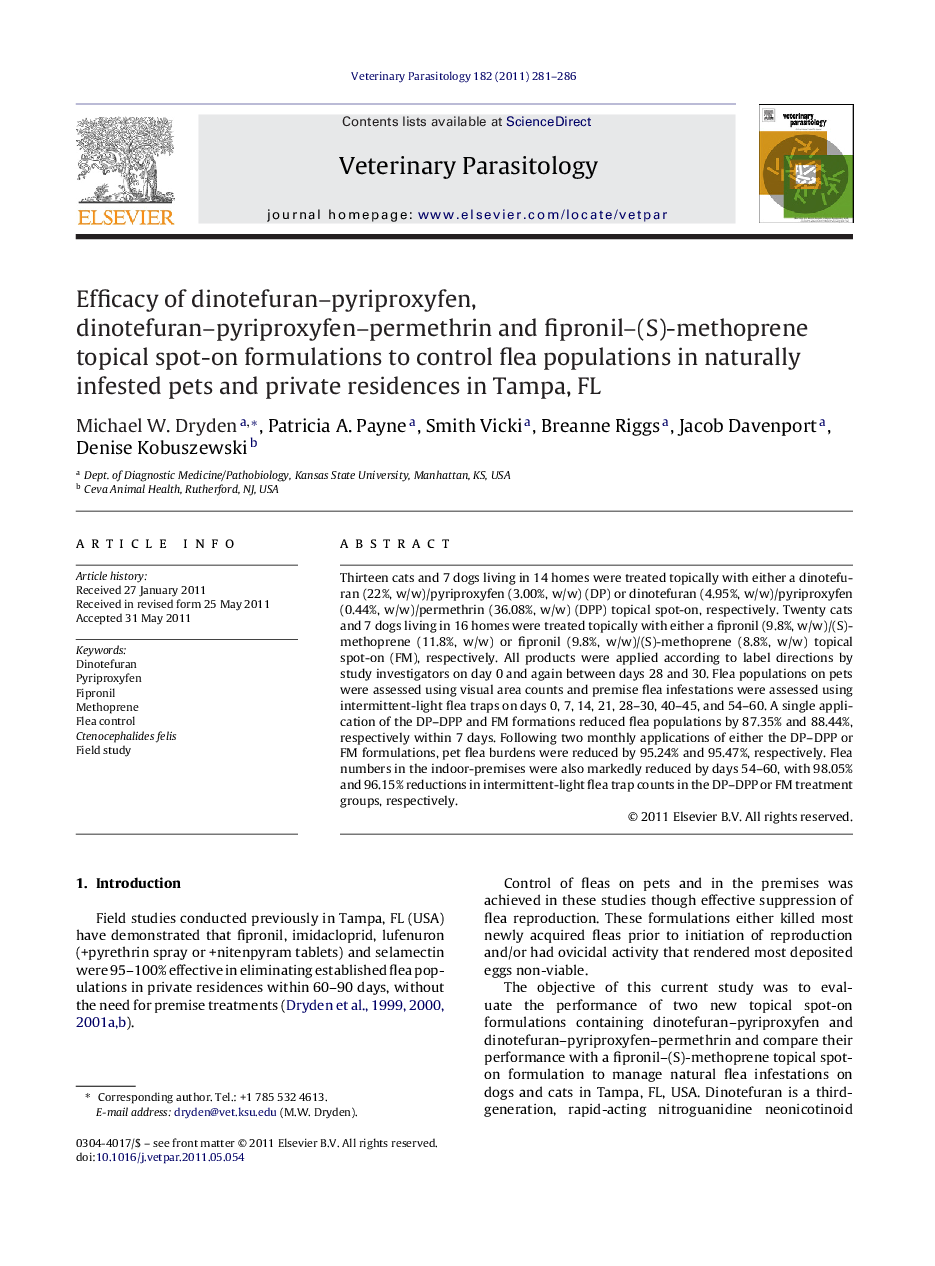| Article ID | Journal | Published Year | Pages | File Type |
|---|---|---|---|---|
| 5805626 | Veterinary Parasitology | 2011 | 6 Pages |
Thirteen cats and 7 dogs living in 14 homes were treated topically with either a dinotefuran (22%, w/w)/pyriproxyfen (3.00%, w/w) (DP) or dinotefuran (4.95%, w/w)/pyriproxyfen (0.44%, w/w)/permethrin (36.08%, w/w) (DPP) topical spot-on, respectively. Twenty cats and 7 dogs living in 16 homes were treated topically with either a fipronil (9.8%, w/w)/(S)-methoprene (11.8%, w/w) or fipronil (9.8%, w/w)/(S)-methoprene (8.8%, w/w) topical spot-on (FM), respectively. All products were applied according to label directions by study investigators on day 0 and again between days 28 and 30. Flea populations on pets were assessed using visual area counts and premise flea infestations were assessed using intermittent-light flea traps on days 0, 7, 14, 21, 28-30, 40-45, and 54-60. A single application of the DP-DPP and FM formations reduced flea populations by 87.35% and 88.44%, respectively within 7 days. Following two monthly applications of either the DP-DPP or FM formulations, pet flea burdens were reduced by 95.24% and 95.47%, respectively. Flea numbers in the indoor-premises were also markedly reduced by days 54-60, with 98.05% and 96.15% reductions in intermittent-light flea trap counts in the DP-DPP or FM treatment groups, respectively.
